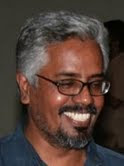MUNNAR DEMOLITIONS REVISITED

Munnar & Media Again
The last column on the very emotional issue of Munnar Demolitions and its media coverage drew a lot of response, both positive and negative. Some of the comments were very perceptive and pointed to the dangers inherent in the tendency of centralizing media and mediation so far as to discount the real. For instance, K Satchidanandan observed that "You are right about the spectacular aspect of the images of demolition and the oblique wish-fulfilment we derive from it as also about the immediate vs. the long -term in politics. (While reading it I also thought of another image of demolition- of Babri Masjid which had a different message and connotation altogether)… At the same time does this fact reduce the value of the real ? It is like even a just act turning into a spectacle. I feel we need to distinguish between the real meaning and the transformed meaning (transformed by the visual media) of the event…This does not in any way diminish the value of your observation about the long-term and less spectacular programmes. To me it is a matter of comparison than of opposites."
But one problem with the 'real' and the transformed meaning of the event is that, while the former can be dealt with and understood only at the realm of the legal-procedural, the latter works at a totally different level where very elusive and manipulatory elements come into play. And that is exactly why one is concerned about it. Basically because it is being given a kind of (blinding) primacy in our society today and its impact, especially in a media-driven society like ours to upset and determine our priorities is tremendous. This also makes it possible to subvert the popular through the populist with media hype. And so, in this constant flood of unanimous narratives, long term effects, solutions and explorations are invariably marginalized. Obviously, the building of systems and structures are never in the horizon of these media discourses as they are not p/liable to such easy spectacular ways...
Another comment was a critical one from Dr Jose Sebastian who thought that the column has not dared to go all the way "It is a very nuanced writing as if you are afraid of speaking out in the open. It is too abstract as well... I expected a kind of candid-black or white sort which I am sure is impossible. But congrats! You are the only one who dared to cast a doubtful eye on this celebration… I think Kerala society will pay for this madness." The writer is actually concerned about the impact such actions will have on the investment climate of Kerala, and suggests various ways in which this could have been handled with long term development in view.
The significant point is that even now, there are almost no reports or analysis about the whole affair. The media still doesn't bother to examine its rationale, possible fallouts, or to explore alternatives available, and the developing of transparent and accountable systems etc. The media is harping on the whole issue only at two levels: one, as a personality and power tussle between the Chief Minister and the Party Secretary, or as the heroic adventure of the Three Men Army battling it out there in Munnar despite all odds.
Unless media comes out of its blindfold, it won't be able to transgress the sensational or travel and see beyond the myopic immediacy it is drowning in.
Labels: kerala development paradox, media spectacle, munnar demolitions





